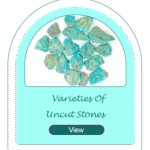Mag
The Journey of Turquoise: Discovery, Mining, and Cutting
The Journey of Turquoise: Discovery, Mining, and Cutting
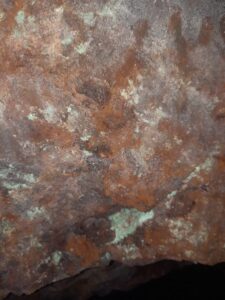
Introduction
The Turquoise Gemstone stands as one of the world’s oldest known gems, admired for its distinctive opaque blue to greenish-blue hue often veined with matrix rock. Its captivating color has graced the crowns of pharaohs, adorned the ceremonial attire of Native American tribes, and symbolized prosperity across ancient Persia. Far more than just a beautiful stone, Turquoise embodies a deep cultural and historical resonance that spans millennia and continents.
Chemically, Turquoise is a hydrated phosphate of copper and aluminum. Its formal chemical composition is represented by the formula:
[ \text{CuAl}_6(\text{PO}_4)_4(\text{OH})_8 \cdot 4\text{H}_2\text{O} ] This precise structure, involving copper (which grants the vibrant blue color) and water molecules (hydration), is critical to its formation and stability. The presence of trace elements dictates the final color palette, ranging from the highly prized, saturated robin’s egg blue (often associated with Persian or American Southwest stones) to mossy greens influenced by iron substitution for aluminum.
Historically, its significance cannot be overstated. In Ancient Egypt, it was mined nearly 6,000 years ago and associated with rebirth and protection. The ancient Persians believed it warded off evil eye, often embedding it in domes and architecture. For Native American tribes, particularly the Navajo, Zuni, and Hopi, Turquoise is considered a sacred stone, inextricably linked to the sky, water, and life itself. This article delves into the complete lifecycle of this magnificent mineral, from its challenging geological origins to the meticulous art of its final presentation.
Chapter 1: Discovery and Geology (How Turquoise is Found)
The genesis of Turquoise is a complex geological phenomenon, demanding a specific confluence of rare elements and environmental conditions. Understanding where is Turquoise found requires an appreciation of its nature as a secondary mineral, meaning it forms near the Earth’s surface through the alteration of pre-existing rocks.
Geological Conditions for Turquoise Formation
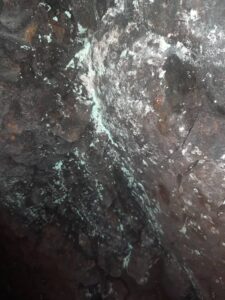
Turquoise does not form deep within the Earth like diamond or sapphire. Instead, it precipitates in veins, seams, or nodules within the oxidized zones of copper deposits. The primary requirement for Turquoise formation centers on the presence of four essential ingredients: copper, aluminum, phosphorus, and water, all interacting under arid or semi-arid conditions.
- Copper Source: The presence of copper-bearing ore bodies (such as chalcopyrite or bornite) is non-negotiable. Groundwater percolates through these deposits, dissolving copper ions.
- Aluminum and Phosphate Source: These elements are typically supplied by the weathering of aluminum-rich host rocks (like feldspars) and phosphate minerals. In many major deposits, the aluminum is derived from kaolinite clays, and the phosphorus from apatite deposits or bat/bird guano rich in phosphates seeping into the groundwater system.
- Arid Climate and Secondary Enrichment: The critical step involves the slow evaporation of this mineral-rich water near the surface. In hot, arid environments, acidic groundwater carrying dissolved copper, aluminum, and phosphate seeps into fissures and cavities within the host rock. As the water evaporates or undergoes chemical changes, the Turquoise mineral precipitates out slowly, forming a microcrystalline structure. This slow crystallization is key to its gemstone quality.
Host Rock Identification and Characteristics
The geology of Turquoise is intrinsically linked to its matrix—the surrounding rock material that often remains attached to the finished stone, creating the characteristic veining.
- Limonite and Ironstone: Many significant deposits, especially in the Southwestern United States (e.g., the famous American Turquoise mines), are found in highly oxidized iron-rich host rocks, resulting in brown or black matrix patterns.
- Sandstone and Shale: In certain regions, Turquoise forms within sedimentary layers, often yielding softer material that requires more intensive stabilization.
- Volcanic Rock: Deposits associated with altered porphyry copper deposits often feature Turquoise embedded in altered volcanic breccias.
The quality of the host rock influences both the color and the porosity of the resulting Turquoise. Porous material absorbs oils and moisture easily, leading to color change (often greening), whereas dense, high-grade material is less susceptible to environmental effects.
Chapter 2: Mining and Extraction
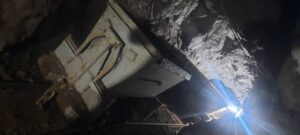
The methods used for extracting Turquoise from the earth vary dramatically based on the scale of the operation, the depth of the deposit, and the quality of the ore body. Historically, Turquoise was mined by highly skilled laborers using rudimentary tools, but today, it is frequently a secondary yield of massive industrial operations.
Traditional and Small-Scale Mining
For millennia, particularly in Persia (modern-day Iran) and early American Southwest operations, Turquoise was extracted using labor-intensive, small-scale techniques.
- Tracing Copper Deposits: Miners relied on geological knowledge and surface indicators—such as areas stained blue or green by copper oxidation—to locate subsurface veins.
- Shaft and Gallery Mining: Traditional operations involved sinking narrow shafts, sometimes reaching depths of over 100 feet. Tunnels, or galleries, were then carefully excavated along the identified Turquoise seams. The Turquoise mining process here was meticulous; every piece of surrounding rock had to be evaluated by hand to avoid fracturing the delicate mineral pockets. Tools were basic: pickaxes, chisels, hammers, and baskets for removing spoil.
- The Use of Fire and Water: In historical methods, sometimes fire was used to heat the host rock, followed by rapid quenching with water, which would cause expansion and cracking, easing the removal of the stone from its matrix.
Modern Large-Scale Operations
Today, the bulk of the world’s commercial Turquoise comes from large open-pit copper mines where Turquoise is an incidental discovery, not the primary target.
- Open-Pit Mining: In vast copper operations (such as those in Nevada or Arizona), large areas are cleared, and rock is removed in massive benches using heavy machinery (bulldozers, shovels, and haul trucks). The Turquoise-bearing material, often localized pockets within the overburden or specific strata, is then selectively separated during the initial crushing or sorting phases.
- By-Product Recovery: When the Turquoise content is high enough to warrant recovery, the ore is transported to specialized processing plants. The overall Turquoise mining process in these settings is dictated by efficiency, often involving mechanical excavation rather than the careful hand-picking of earlier eras.
Sorting and Preliminary Processing
Once extracted, the rough material undergoes initial sorting. Stones are separated based on color saturation, matrix presence, and hardness (or “crazing”—the network of fine lines characteristic of some stones). Material deemed too soft or impure for direct cutting may be set aside for stabilization treatments, which is the next crucial step in readying the gem for market.
Chapter 3: Cutting and Finishing (From Rough to Ready)
The transformation of rough, often fragile, mineral nodules into polished, vibrant gemstones is the realm of the lapidary artist. This stage requires significant expertise, particularly because Turquoise’s moderate hardness (5–6 on the Mohs scale) and variable porosity demand specialized handling.
Initial Preparation and Stabilization
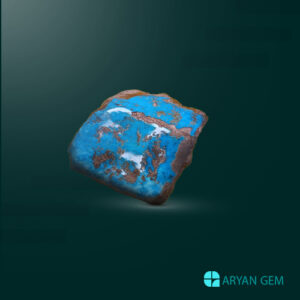
Before any serious cutting can occur, the rough stone must often be stabilized to ensure durability and consistent appearance.
Stabilization Methods
A significant percentage of mined Turquoise, especially that sourced from porous matrix rock, requires treatment to meet gemological standards. Stabilization aims to harden the stone, prevent cracking, and enhance or lock in the color.
- Polymer Infusion (Resin Treatment): This is the most common modern method. Low-viscosity liquid polymers (often acrylic or epoxy resins) are forced into the pores of the stone, usually under a vacuum. Once cured, the resin fills the voids, significantly increasing the stone’s hardness and resistance to environmental change.
- Wax Treatment: Historically and commonly used, soaking Turquoise in molten paraffin wax or specialized microcrystalline waxes fills surface pores, improving luster and temporarily deepening the blue color. This treatment is less permanent than polymer infusion.
- The Zachery Process (Proprietary/Advanced Stabilization): While specific details are often proprietary, advanced stabilization techniques aim for greater integration of strengthening agents, potentially involving heat cycling and specialized chemical baths to bond the mineral structure internally without completely obscuring the natural matrix.
It is vital for the gem trade to disclose whether a stone has been stabilized, as unstabilized, natural material often commands a premium price.
The Lapidary Process: Cutting Turquoise
The goal of cutting Turquoise is usually to maximize the stone’s color field while skillfully incorporating attractive matrix patterns, if present.
Cabochon Dominance
The vast majority of Turquoise is cut into a Cabochon shape. This technique involves grinding and polishing the stone into a smooth, convex dome without facets.
- Why Cabochons? This shape is preferred because Turquoise is opaque, meaning facets would not allow light to refract internally for brilliance. The dome shape best showcases the depth of color and the natural flow of the matrix patterns.
- Cutting Technique: Lapidaries begin by sawing the rough material into manageable preforms using diamond-edged saws. The stone is then progressively ground using silicon carbide wheels, starting with coarse grits and moving to finer grits to shape the dome profile (often low-domed or high-domed, depending on the desired look).
Other Cutting Forms
While less common, Turquoise lapidary work also includes:
- Beads: Turquoise is laboriously drilled and shaped into spherical or barrel-shaped beads, often requiring specialized, high-speed precision drilling to maintain symmetry and avoid fracture.
- Carvings: High-quality, massive pieces of Turquoise are sometimes carved into decorative elements, small sculptures, or inlay pieces, capitalizing on the stone’s relatively low hardness compared to corundum or diamond.
Final Polishing
The final step involves polishing the stone using extremely fine abrasive compounds (such as cerium oxide or tin oxide) on a leather or felt lap. This process brings out the stone’s characteristic waxy to sub-vitreous luster, completing the journey from raw mineral to wearable gem.
Conclusion
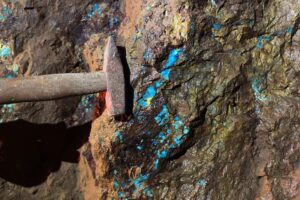
The Turquoise Gemstone encapsulates a magnificent journey, beginning in chemically precise, arid geological environments where copper, aluminum, and phosphate precipitate slowly over eons. Its discovery has fueled trade routes and shaped cultural identity for millennia, from the deserts of Iran to the mountains of the American Southwest. The mining process, whether done by hand in narrow shafts or as a by-product of colossal open-pit operations, extracts a mineral often too delicate for immediate use. Finally, the skill of the lapidary, utilizing advanced Turquoise stabilization techniques and meticulous cutting Turquoise methods, reveals the hidden beauty within the rough matrix. This enduring appeal—a tangible piece of Earth’s history imbued with spiritual significance—ensures that Turquoise remains one of the most beloved and culturally rich minerals in the world of jewelry and adornment.



